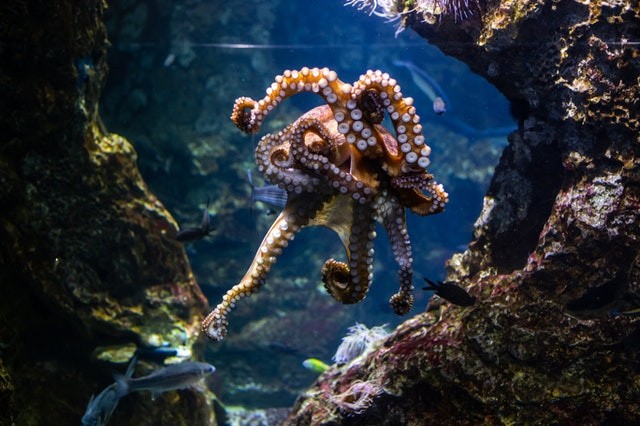Humans have the ability to experience a wide range of pains, from mourning to famine, and worst of all is - hitting your toe in the morning of a cold winter.
Pain was seen to be a far easy concept for invertebrates as a way of trying to ammend something that is affecting the body via reflex. However, new research depicts a different image for the perception of pain among one of the most alluring and clever invertebrates on earth which is the fish-punching octopus.

The Three Parts Of Octopuses Pain
A Journal that has undergone enhancement but yet to be a definitive version of record that is to appear in the journal iScience talks about the pain of octopuses in three major parts.
The first contained an octopus getting different medications in three chambers of a tank, after which they picked a chamber the octopus displayed a liking for.
Octopuses that collected a painful injection, known as acetic acid( AA) would keep away from the chamber in which they collected the injection, even if they had previously liked the chamber as a preferred hangout.
A control making use of painless saline injections, which did not seem to have an effect on the chamber preferences of the octopuses.
Octopuses feeling ongoing pain could have their lowest cherished chamber changed into their most loved chamber if pain relievers were given to them in the form of a lidocaine injection while inside the chamber.
This avoidance or acceptance to chambers allied with pain and pain relievers accordingly - could show that octopuses have adverse emotional reactions towards pain, information which they can use to control their surroundings as a way of eluding that pain.
ALSO READ: Jailbreak! Octopus Escapes From New Zealand Aquarium
Biased Strategy to Pain
The next part studied if the octopuses had a biased strategy to pain, trying to know whether they could disassociate the site of distress or to know whether pain response attitudes were universal unmindful of where the boo-boo was.
Injection into one arm with acetic acid (AA) was again given to some octopuses, while others were given injections with saline and lidocaine.
The acetic acid (AA) grouped differed, as the octopuses executed a directed and confirmed pain response in nurturing the area where the injection was given with their beak.
This nurturing took up to twenty minutes and saw the removal of skin around the injection area in some mammals. The octopuses injected with the other two medications either did not respond or in short nurtured the injection area.

The Final Part of the Study
The third part, which is the final part of the study drew interesting equals between animals and cuttlefish. When animals harm a limb, for example, their paw, the nervous activity allied with the pain occurs in the central brain.
This neural activity from the area of injury is also found among cephalopods and - up till now - cephalopods are the only invertebrate taxon known to acknowledge cloning this pattern of mammals. A baffling concept in the conditions that octopuses have rare brains that widen into their limbs.
For more news, updates about octopuses and similar topics don't forget to follow Nature World News!
© 2026 NatureWorldNews.com All rights reserved. Do not reproduce without permission.





